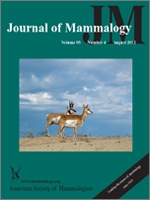Establishing status and trend for an endangered species is critical to recovery, especially when it is faced with a nascent extinction agent. We calculated, with hierarchical log-linear change-point models, hibernaculum-level population trends between 1983 and 2009 for the endangered Indiana bat (Myotis sodalis) now subjected to the fast-spreading fungal disease white-nose syndrome. We combined trends from 222 wintering populations before and after onset of the disease to determine trend for clusters of interacting wintering populations, recovery units, and the species. Before onset of the disease, a west-to-east gradient in trends existed, with westernmost populations declining and easternmost populations increasing in abundance. The species as a whole, however, was stationary between 1983 and 2005 (−0.5% mean annual change; 95% confidence interval [CI] = −2.8, 1.8%). Estimated mean population size in 2009 was 377,124 bats (195,398–957,348), with large variance apparently caused by white-nose syndrome. With the onset of white-nose syndrome (2006–2009), the species exhibited a 10.3% annual decline (95% CI = −21.1, 2.0%). White-nose syndrome is having an appreciable influence on the status and trends of Indiana bat populations, stalling and in some cases reversing population gains made in recent years.
How to translate text using browser tools
1 August 2012
Population-level impact of white-nose syndrome on the endangered Indiana bat
Wayne E. Thogmartin,
R. Andrew King,
Patrick C. McKann,
Jennifer A. Szymanski,
Lori Pruitt

Journal of Mammalogy
Vol. 93 • No. 4
August 2012
Vol. 93 • No. 4
August 2012
change-point analysis
endangered species
Geomyces destructans
Myotis sodalis
trend estimation




